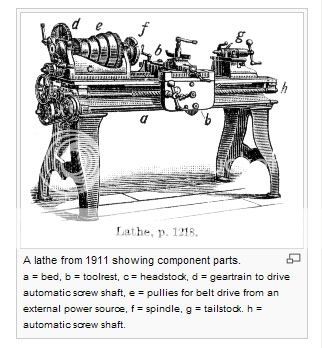I want to build a slab/live edge table using a set of cast iron legs from an old (early 20th century) lathe that was left outside then dropped (legs are fine, but the rest is toast). I would like your input on how to attach the legs to a tabletop. I have not yet bought the slab, but it will be finished between 10/4 and 12/4 thick. If the slab sits directly atop the legs, it will already be about the maximum height I would want it, so I'm looking for a system that adds little or no height. Also, the tabletop/legs will have to be able to be disassembled for moving.
I'm currently thinking of epoxying in three threaded inserts in each side of the slab side to attach each leg pair. I would use bolts that are smaller than the holes in the legs to allow for movement. However, I'm very concerned about movement of the wood compared to the cast iron. How would you guys attach them?
Lathe showing similar (but not identical) legs
Threaded inserts I have in mind






 Reply With Quote
Reply With Quote





